June 30, 2024
Albertopolis is the nickname given to the area centered on Exhibition Road in London, named after Prince Albert, Queen Victoria’s consort (husband). It contains many educational sites, including the Victoria and Albert Museum, the Science Museum, and the Natural History Museum.
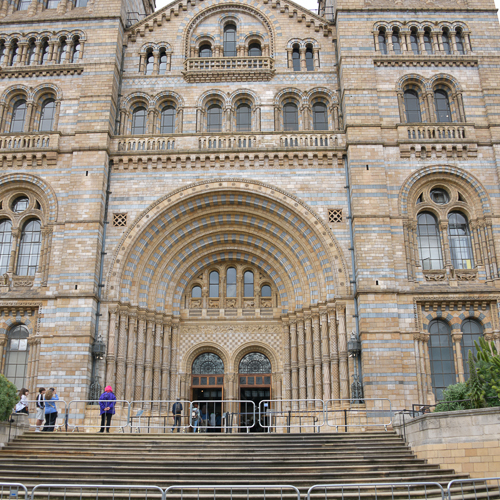
The entry to the National History Museum
Exhibition Road gets its name from The Great Exhibition of the Works of Industry of All Nations, also known as the Great Exhibition or the Crystal Palace Exhibition (in reference to the temporary structure in which it was held). It was an international exhibition in Hyde Park from May 1 to October 15, 1851. It was the first in a series of World’s Fairs exhibitions of culture and industry that became popular in the 19th century. The event was organized by Henry Cole and Prince Albert.
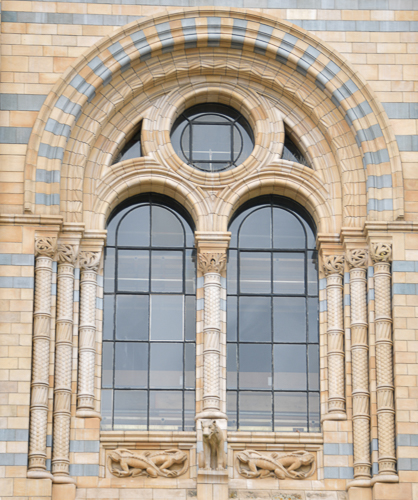
One of many windows covers the rather long front of the Natural History Museum.
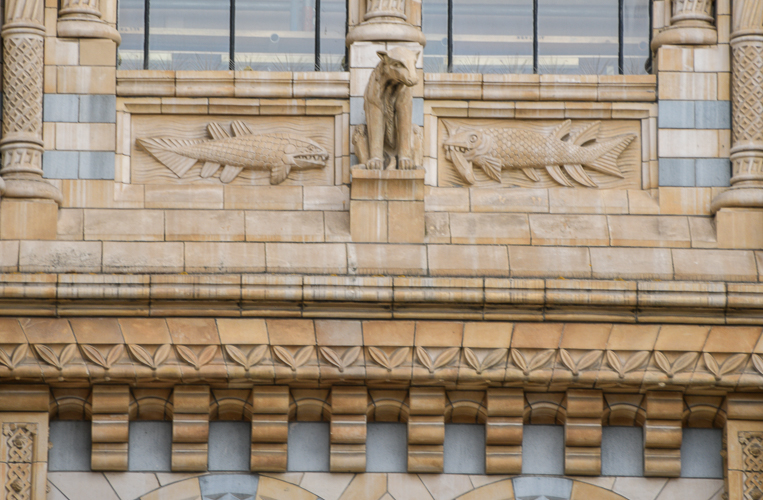
There are creatures everywhere in and around the building. Some are extinct, and some are not.
Richard Owen, then superintendent of natural history collections, persuaded the trustees of the British Museum that a separate building was needed to accommodate their ever-growing catalog of the natural world.
Owen envisioned a ‘cathedral to nature’ that would celebrate the richness and abundance of life on Earth and inspire scientists and the general public.
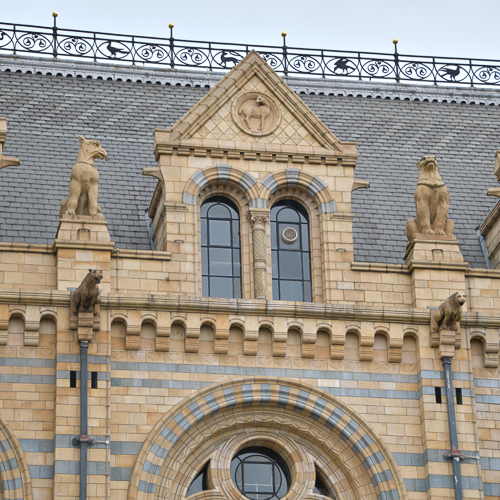
Francis Fowke, who had also designed the Royal Albert Hall and parts of the Victoria and Albert Museum, was chosen as the architect. However, when Fowke died the following year, the relatively little-known architect Alfred Waterhouse received the commission. He used terracotta design for the entire building. This was a smart choice at the time as, in the 1850s, London was heavily polluted, and architectural details could quickly disappear under all the black soot. It was thought Terracotta would be more hygienic and offer some resistance to the pollution.
I could only walk around the exterior, but I understand the interior is as breathtaking as the exterior.
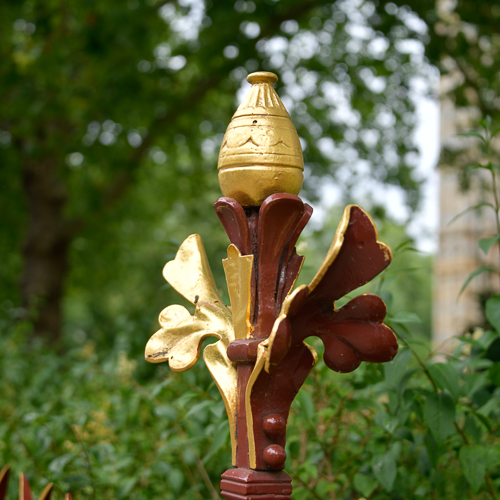
Gold-leafed leaves cap the fence that surrounds the Natural History Museum.
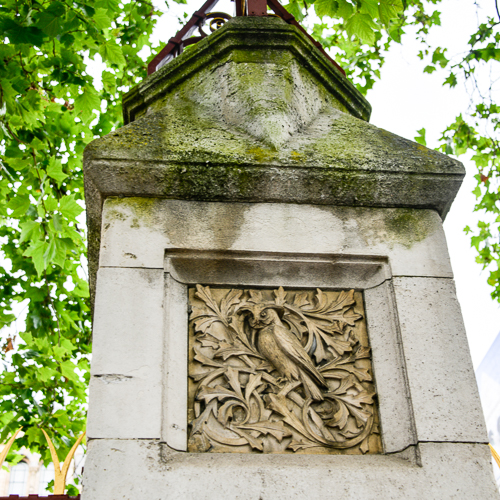
Animals also grace the concrete pilasters of the fences.
Royal Albert Hall
As part of what was to become Albertopolis, the Exhibition’s Royal Commission purchased Gore House. Sadly, Prince Albert died, so a memorial was proposed for Hyde Park, with a Great Hall opposite the park. The site was purchased with some of the profits from the Exhibition. It was designed by civil engineers Captain Francis Fowke and Major-General Henry Y. D. Scott of the Royal Engineers and built by Lucas Brothers.

Originally to be called the Central Hall of Arts and Sciences, Queen Victoria changed its name to the Royal Albert Hall of Arts and Sciences upon laying the Hall’s foundation stone in 1867 in memory of her husband, Prince Albert, who had died six years earlier.
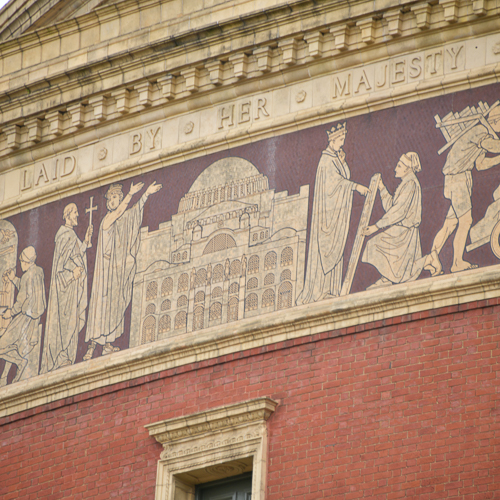
An 800-foot-long mosaic frieze titled ‘The Triumph of Arts and Letters’ encircles the building. It consists of foot-long slabs of mosaic tesserae.
When the Hall was being designed, its architect, Major-General Scott RE, requested that the mosaic be sculptural. However, time and money constraints meant that mosaic was adopted. Seven leading artists of the Victorian age were commissioned to design the 16 sections that make up the entire frieze and depict human accomplishments throughout history.
The mosaic’s tesserae were manufactured in terracotta by Minton, Hollins & Co. and then arranged into 800 slabs by the women’s mosaic class at the South Kensington Museum, now known as the V&A.
The meaning of each section of the frieze is extensive. The picture above was designed by William Frederick Yeames (1835–1918). The domed building is in Hajia Sofia, Istanbul. To the right is a king accepting the plans for Hagia Sofia.
Albert Memorial
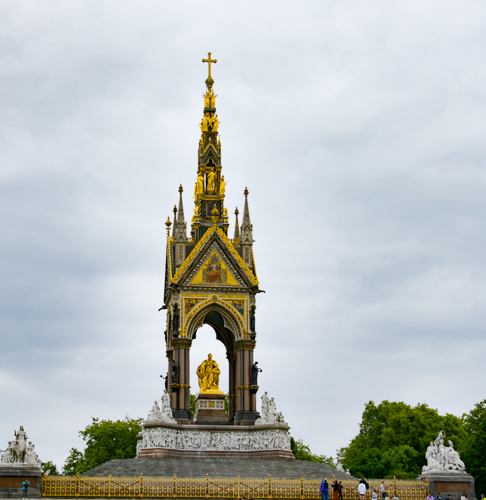
The Albert Memorial was unveiled in 1872 and was designed by George Gilbert Scott, and built at a cost of £120,000 which was raised by a combination of public subscription and Parliamentary grants.
Influenced by the series of 13th-century Eleanor Crosses, such as the Charing Cross and other statues in Edinburgh and Manchester, Scott’s memorial design is in the Victorian Gothic style. The centerpiece of the memorial is a 14-foot-high statue of Prince Albert holding the catalog of the Great Exhibition.
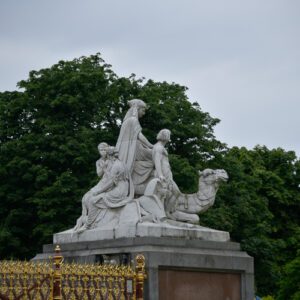
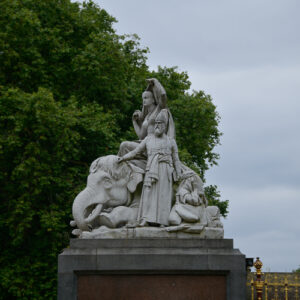
Marble figures representing Europe, Asia, Africa, and America stand at each corner of the memorial.
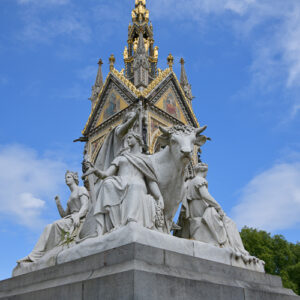
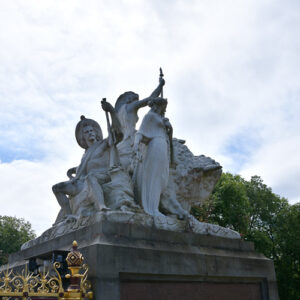
The Frieze of Parnassus at the base of the memorial depicts celebrated painters, poets, sculptors, musicians, and architects.
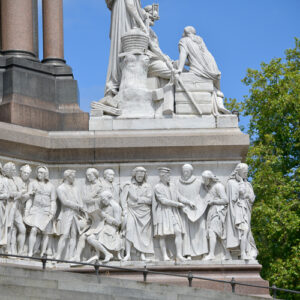
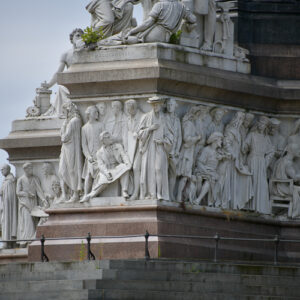
*
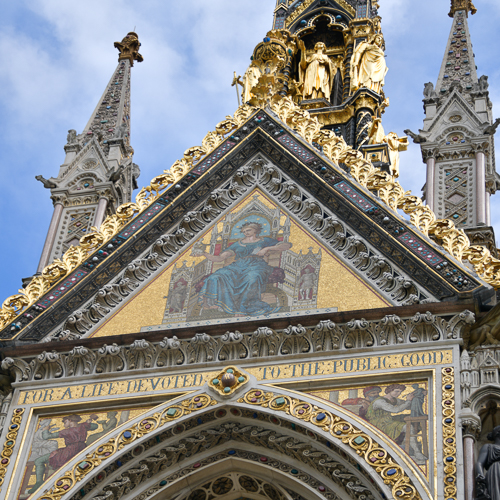
The mosaics for each side and beneath the canopy of the Memorial were designed by Clayton and Bell and manufactured by the firm of Salviati of Murano, Venice.
The V&A
The architecture and art of the V&A deserve their own book. On this visit I was interested in the mosaic marble floor in the sculpture gallery.
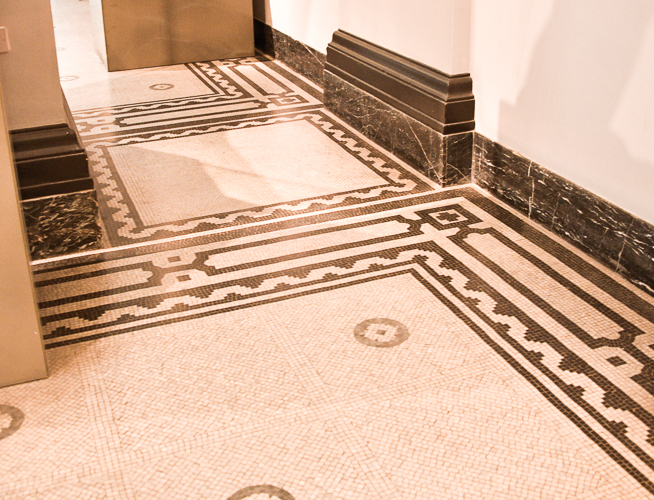
Francis Moody was responsible for the design of the mosaic floor in the corridor. The mosaic in the corridor was the work of female convicts in Woking prison. Approved by the Home Secretary, it was nicknamed ‘Opus Criminale’. The women made up mosaic panels for floors in numerous parts of the museum.
One could spend weeks and weeks exploring the Albertopolis.